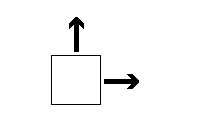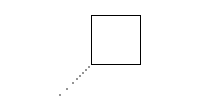





VECTORS AND FORCES
I. BASIC IDEAS
Forces are involved in everything that happens around us. We use force
to move things around. Even standing still involves forces.
For Cases 1 - 5, the movement is linear. That means all the forces lie along one line, even if they are in different directions. (Place your mouse cursor over the black arrows to see an illustration). Each black arrow represents a force in the direction it points to. The gray arrows show what happens next, and the dotted gray lines represent movement.
In Cases 1 - 3, you can work out magnitude of the resultant forces (the 'combined' forces) (daya paduan) by adding the forces together. Usually, right and up are positive directions, whereas left and down are negative directions (although this might not always be the case). In Cases 1 and 2, there is only 1 force involved so no calculation is needed.
For Case 3, let each black arrow be the force of 1 Newton:
| F | = 2 + (-1) | <- The right (positive) force plus the left (negative) force |
| = 2 - 1 | ||
| = 1 N |
The final direction is positive, so it's to the right.
| 6. |   |
If the box is pulled to the right and upwards, the box would move diagonally. Here, the movement is no longer linear. There are two lines involved: Left-right and up-down (Again, move your cursor over the diagram below). Therefore, you CANNOT simply add the forces like above. Also note that the final direction DOES NOT follow either one of the two forces (i.e. the resultant force is in a totally different direction) |
Page: 1 | 2 |
3
The Notes Portal Home